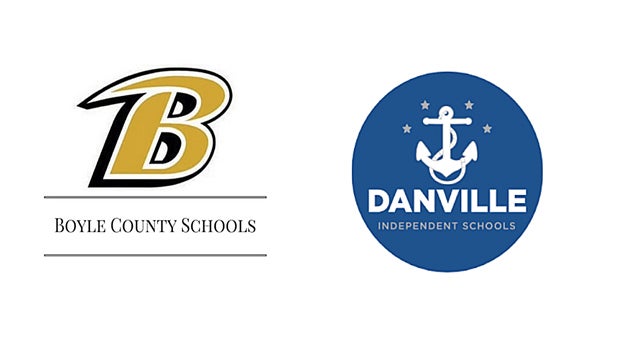School districts face expenditures due to COVID-19, will have future cuts
Published 9:25 pm Monday, November 2, 2020
School districts have considerable expenditures due to the COVID-19 pandemic, and they have needed to find ways to adjust, pulling from contingencies in their general funds, applying for Federal Emergency Management Agency reimbursements, and other methods.
“Overall, COVID has been a challenge for students, families, teachers, school districts — it’s a challenge,” said Tammy McDonald, superintendent of Danville Independent Schools. “At the end of the day, regardless of the cost, we want to do everything we can to provide the best education possible under these extreme circumstances for our students.”
Chief Financial Officer for Boyle County Schools David Morris said something similar, that the goal in the district is to make the virtual or hybrid learning environment as high in quality as possible compared to in-person schooling.
Morris said for Boyle County Schools, COVID-19-related expenditures will be more than $700,000. Morris said this is a potential forecast and does not represent all items the district’s board of education has taken action on. The number includes personal protective equipment for staff and students, dividers in classrooms to limit transmission, doing food service to deliver food directly to families, providing hotspots for families with poor or no home internet access and providing one device per every one child, or one-to-one devices, for kindergarteners and first-graders — students in second through 12th grades already had one-to-one devices.
However, Morris said one thing to note is that the $700,000 includes a possible salary increase to classified employees like custodians and food service employees. He said this possible salary increase is under consideration by the district’s board of education and is not currently in place. This is in response to additional duties classified employees have due to COVID-19, such as additional cleaning and a more intensive process of food preparation, making meals prepackaged for safety and in some cases delivering them directly.
The $700,000 also includes a projected cut from the Kentucky Department of Education that will happen in the near future, which is estimated to be about $100,000 for the possible budget cut. So, not including projected or potential expenses, the current cost of what the district has already done in response to COVID-19 is right around $270,000, Morris said. Another thing Morris said is important to note is that the district has considerable construction expenses that come from the general fund that are not anticipated to be yearly costs.
Morris said the cut from the Kentucky Department of Education will be an approximate 8% minimum budget cut and will affect state programs. A spreadsheet provided by Morris reflects projected cuts from the KDE to programs. There will be cuts to Kentucky Education Technology Systems, Family Resource and Youth Services Centers, which has the largest projected loss, the Gifted and Talented program and Read to Achieve. Other possible cuts will be to Extended School Services, Safe Schools and Kentucky Educational Collaborative for State Agency Children.
There has been a safety net in dealing with expenditures, Morris said. The district has been able to receive Coronavirus Aid, Relief, and Economic Security Act money and money from Last Mile, a federal program that helps with internet usage. The district will also be able to file a FEMA claim since COVID-19 is considered a current disaster, which could allow the district to be reimbursed for 75% of expenditures. The issue, Morris said, is the district is not guaranteed this money. However, there is also money in the general fund set aside for emergencies, which Morris said has been helpful to cover expenses — the district’s fund balance is in good shape, he said.
“We’ve got a lot of things that are unexpected, a lot of uncertainty out there, but the fund balance is what’s allowed us to be able to continue to offer the quality services and the virtual learning and the prepackaged meals and the meal delivery to kids,” Morris said. “It’s been a really awesome thing to see how our staff has reacted under such difficult circumstances.”
The Danville Independent Schools district is in a similar situation. It also has received CARES Act money and is requesting reimbursement from FEMA. McDonald said the district is not hurting from its COVID-19 expenditures and is not in the red. The district has had about $286,393 worth of COVID-19-related expenses so far beyond what the district would have spent last school year. This includes tech funds, plexiglass, masks, cleaner, hand sanitizer and payroll increases for cleaning and food services, McDonald said. Since the district already had a one-to-one ratio for devices per child in grades K-12, there was not an expense for additional individual devices for children, she said.
One thing to note, however, is that there is an approximate $10,000 monthly cost for COVID-19-related expenses, she said, which includes a monthly fee to provide hotspots.
The district recently filed a little over $92,000 of expenses it felt would qualify with FEMA and hopes to receive 75% of this through reimbursements. The money the district received from CARES Act relief was divided into two different categories of funding — $546,586 on a federal level and $93,762 on a state level. Like Boyle County Schools, however, the district also faces the future approximately 8% cut from KDE, which she said will impact services like preschool and extended school day services.
The district has had to adapt to find different ways to provide necessary services during the pandemic, McDonald said. The Family Resource and Youth Services Center has gone into homes to provide clothing, food and other resources. Athletic programs and extracurricular activities continued even when learning was all virtual. Currently transportation isn’t provided for most students, largely due to the fact that bus drivers are high-risk during the pandemic. The district has had to adapt in this way to both meet needs and also ensure safety, she said.
“The health and safety of our employees is always first and foremost,” she said.







